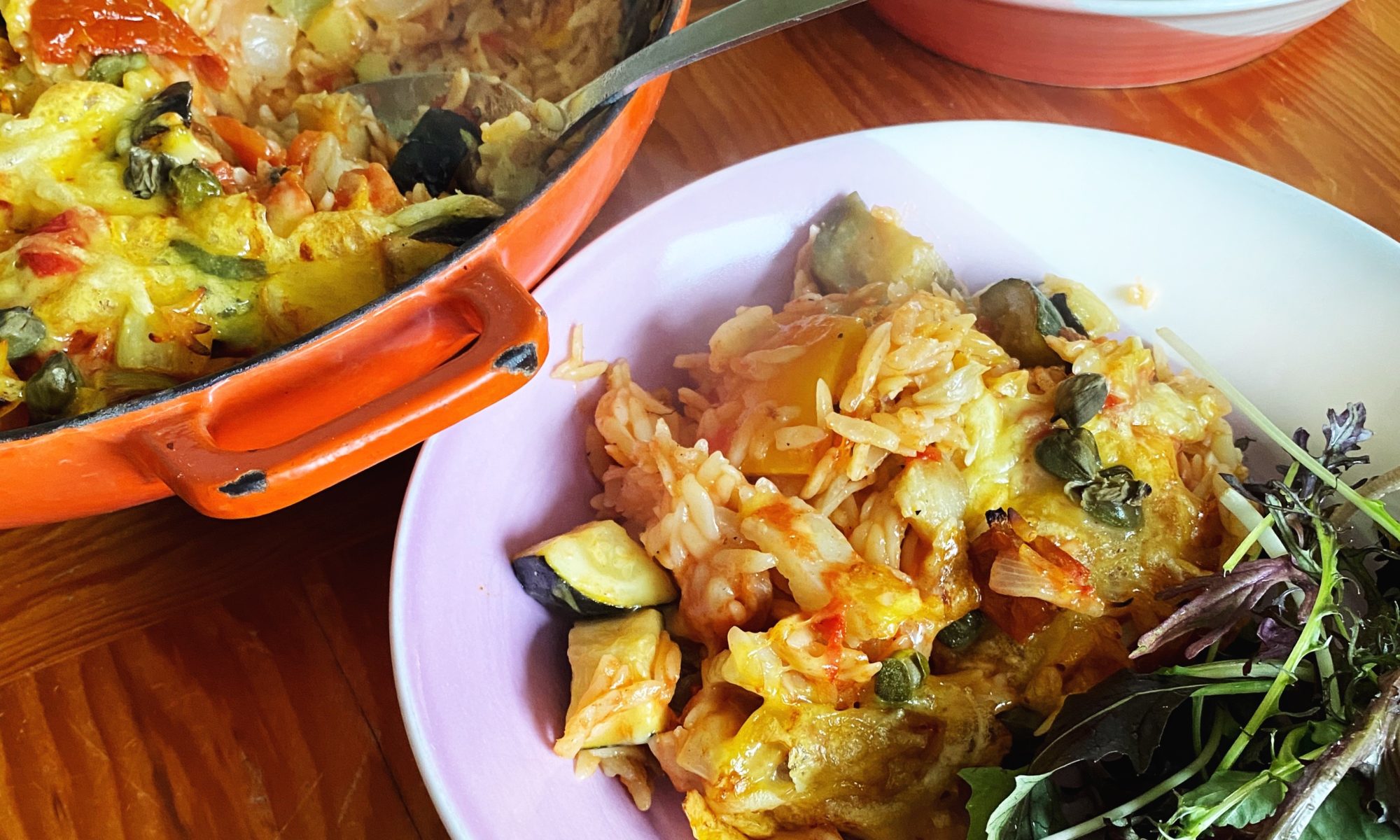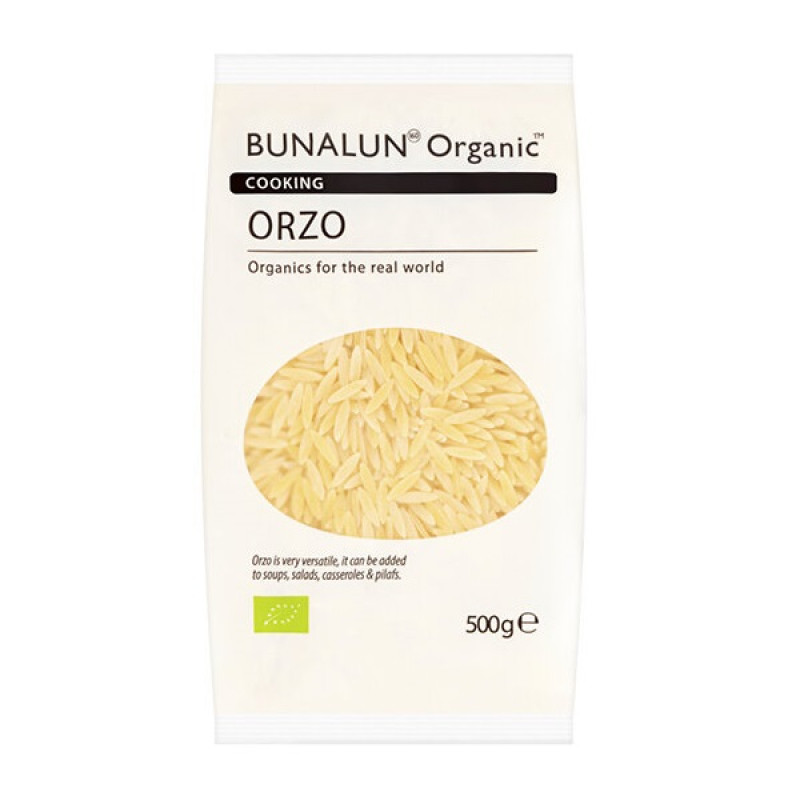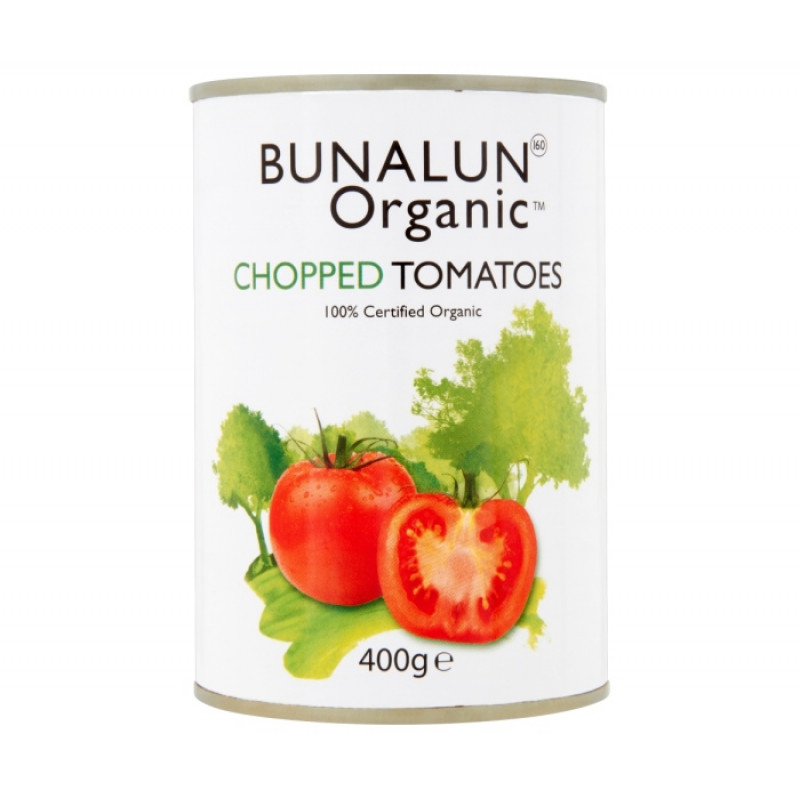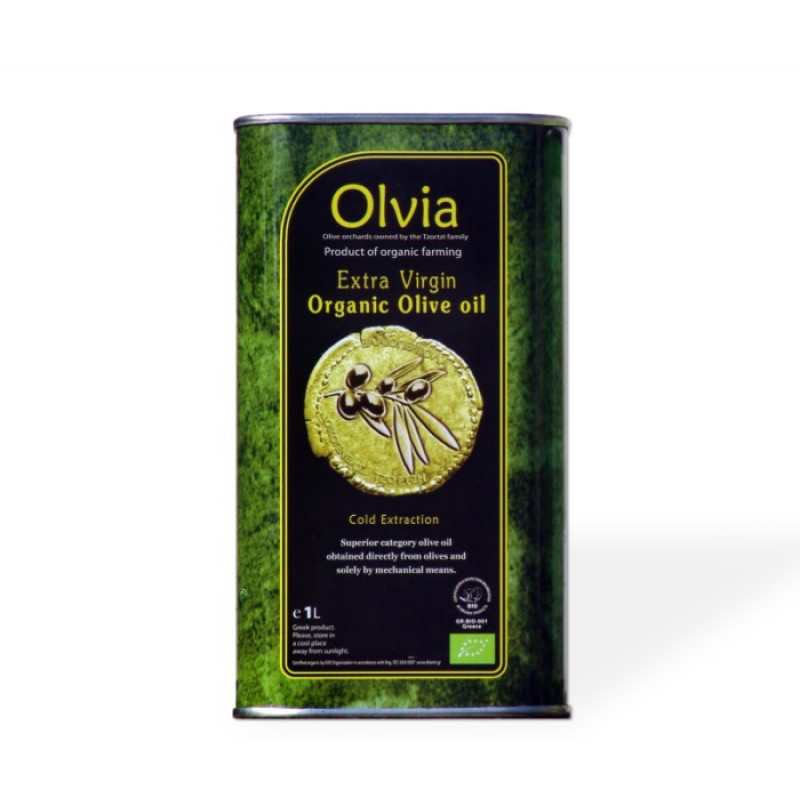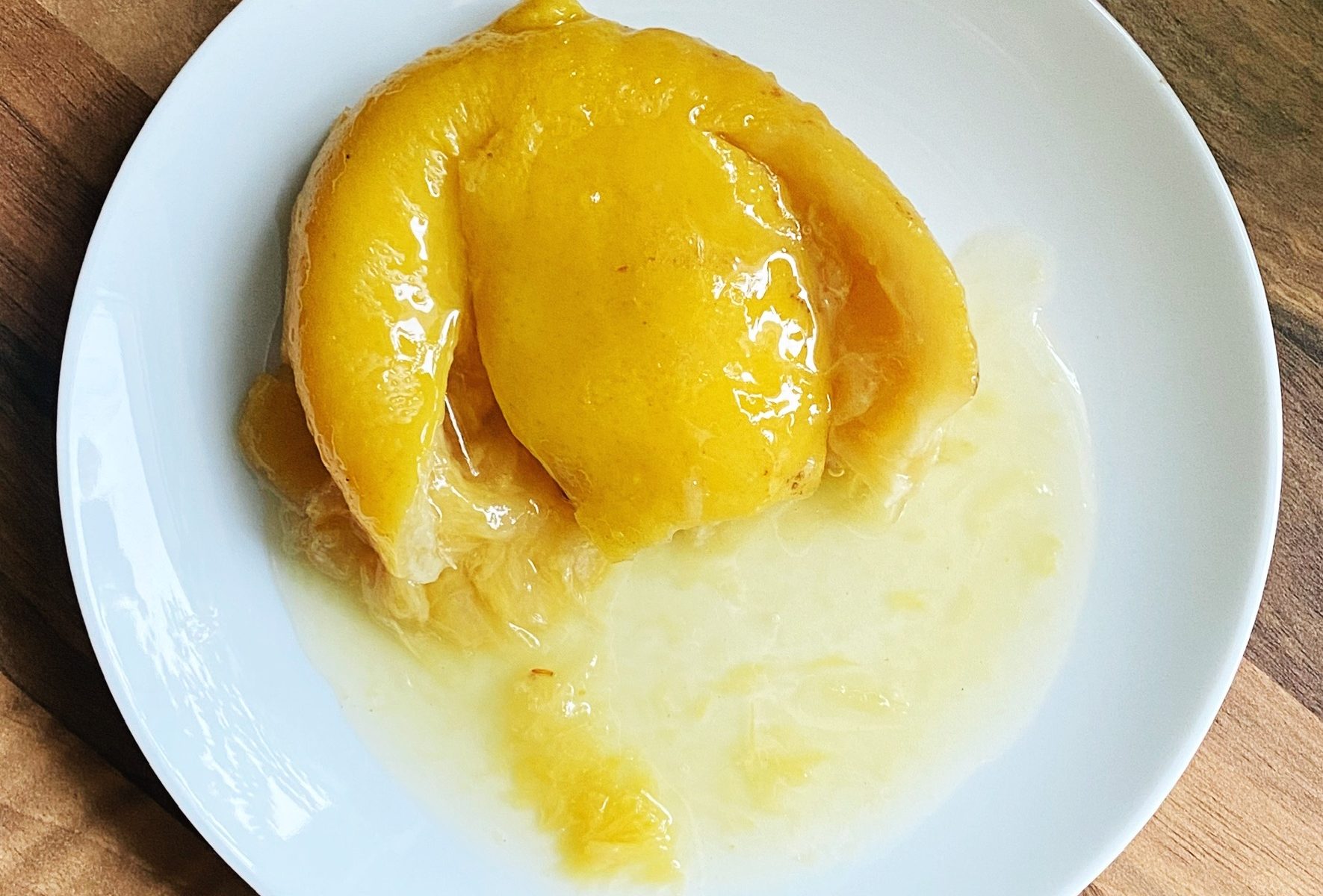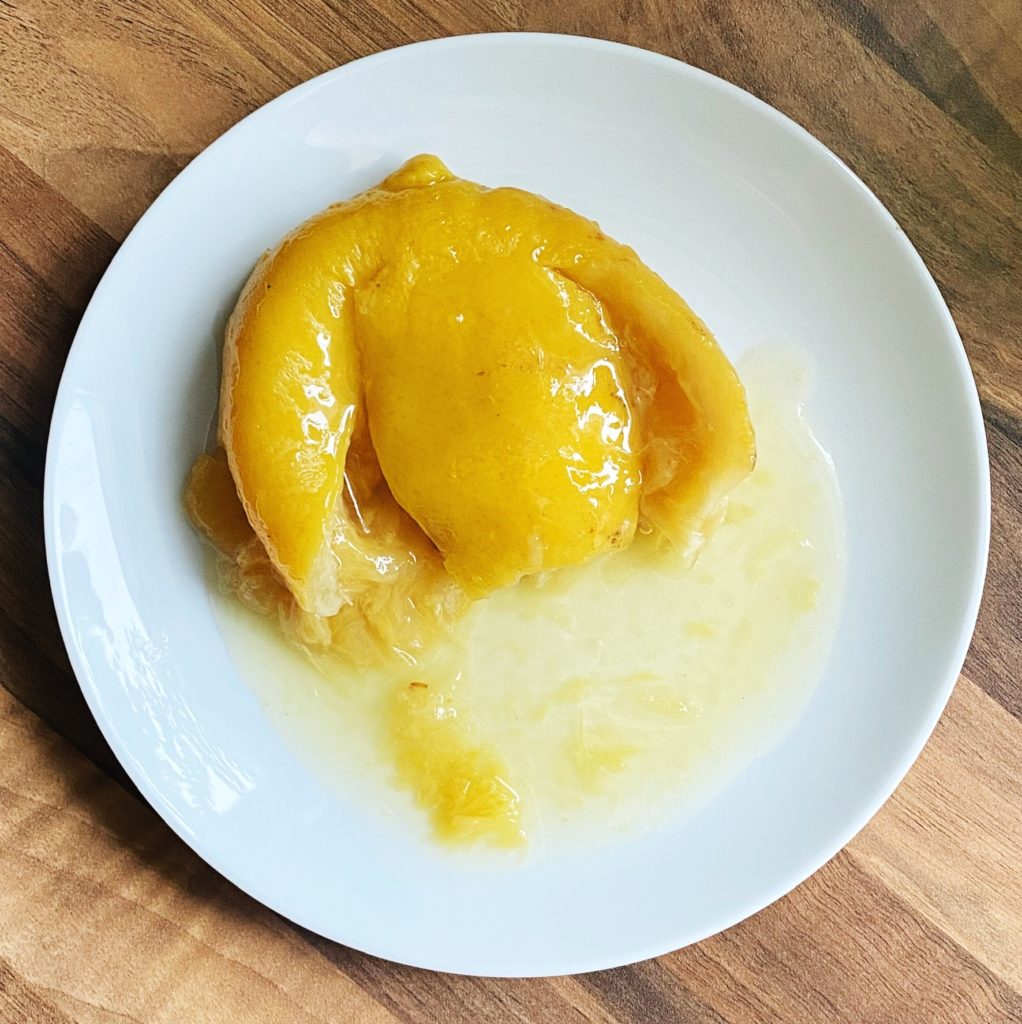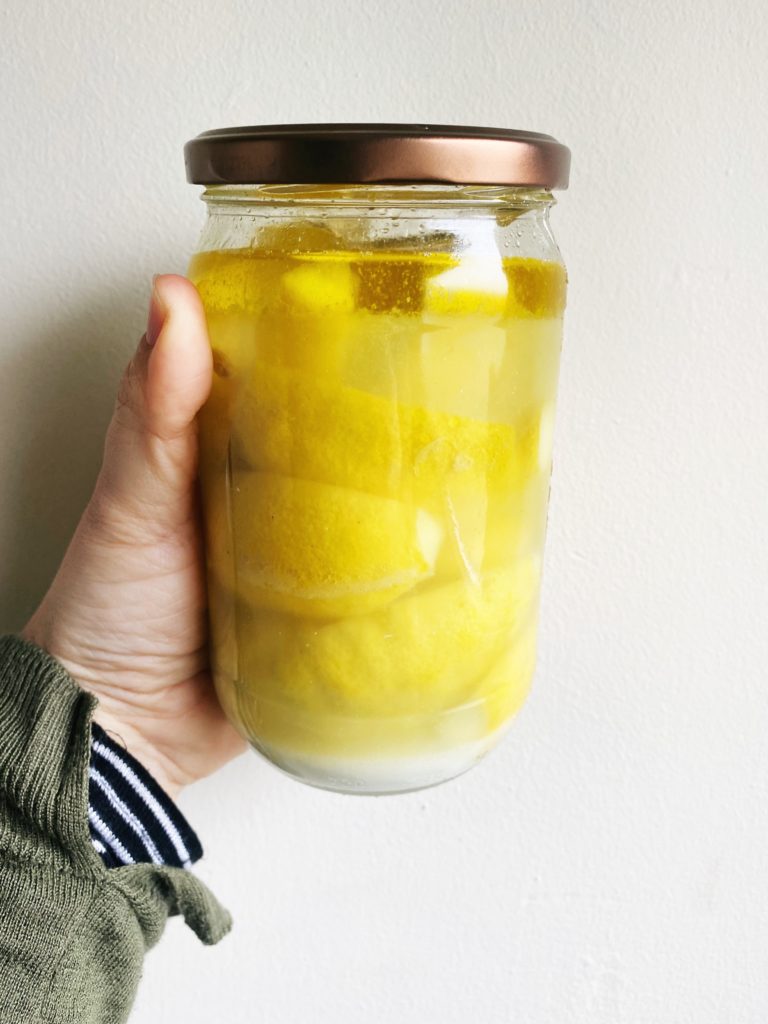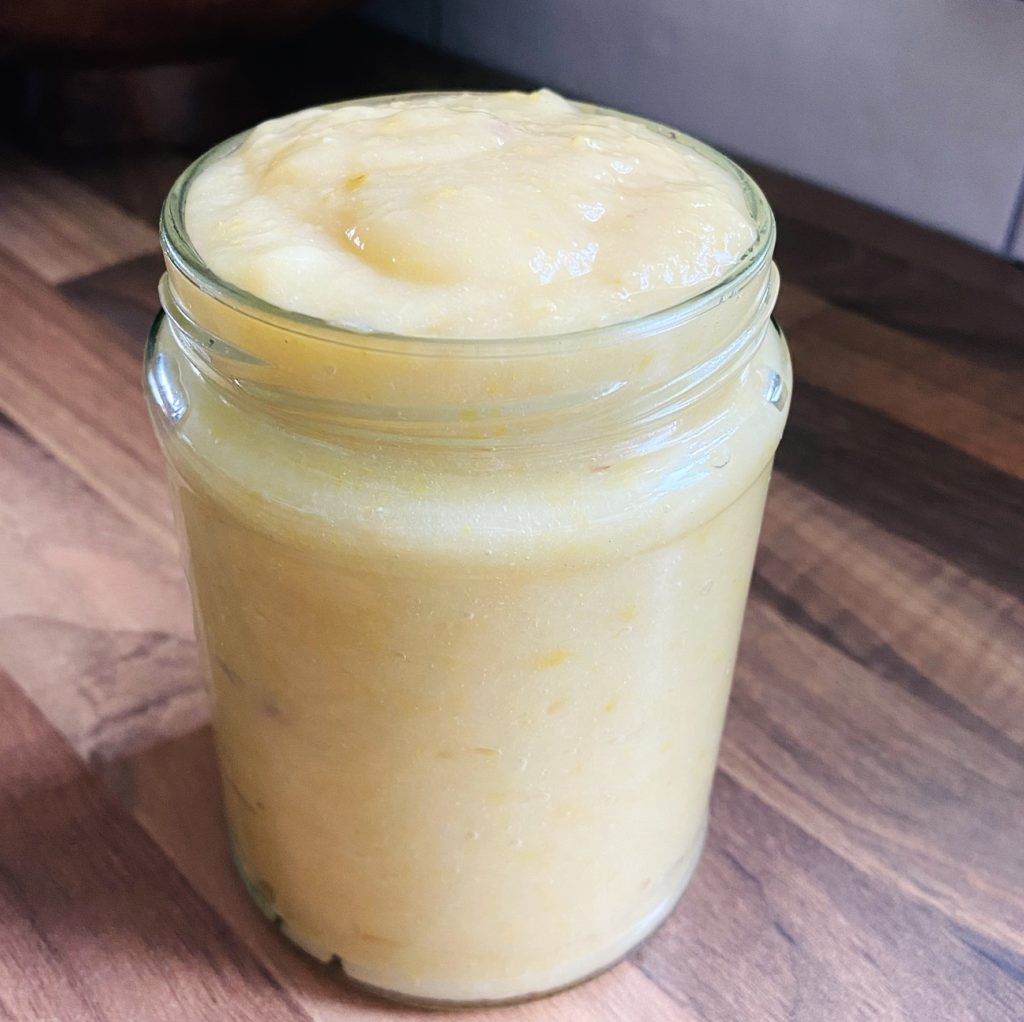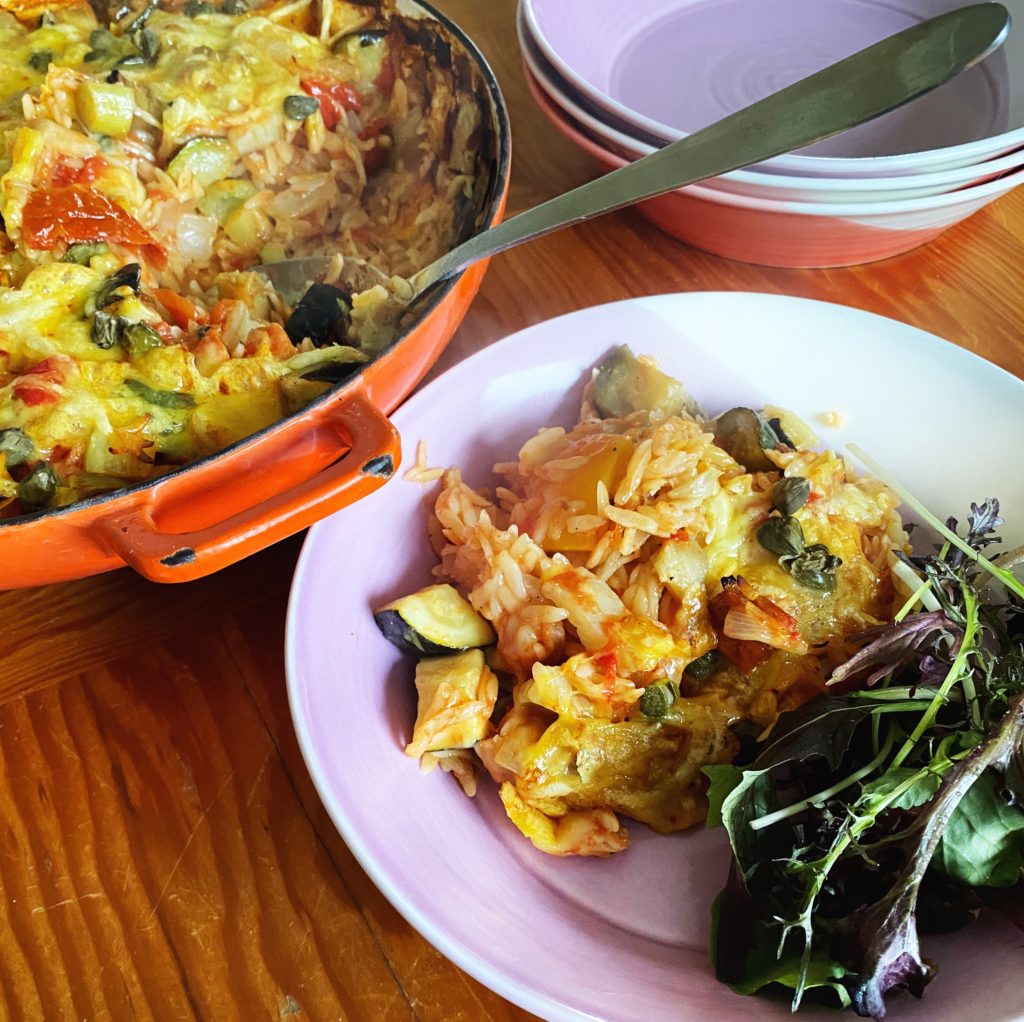
One pot suppers are my favourite types of suppers. Not just for the lack of pots and pans to scrub, although let’s be honest, that is the main reason, but also because it’s just so satisfying, pulling a dish out of the oven and onto the centre of the table and watching everyone tuck in. This baked orzo recipe, like pretty much all of my recipes, is super-flexible. Use it as inspiration rather than instruction and tweak it with any vegetables you have in your box this week. Orzo is simply rice shaped pasta. I often pop a drained tin of beans or lentils into the mix too for some added fibre and protein. Let us know how your version went in the comments.
Liz x
Ingredients (serves 4-5)
- 4 tbsp olive oil
- 2 onions – diced
- 6 cloves of garlic – diced
- roughly chopped vegetables of your choice (I went ‘Med-veg’ style and used – 1 aubergine, 1/2 a fennel bulb, 2 courgettes, 1 yellow pepper)
- 500g orzo pasta
- the juice of a lemon (or a tbsp of preserved lemon paste)
- 1 tin of chopped tomatoes
- 500ml water
- salt, pepper and herbs to taste
- added extras to taste – olives, capers, sun-dried tomatoes, a drained tin of beans/lentils/chickpeas…
- grated cheese (or vegan cheese – we sell a range or make my tofu-feta recipe) to finish
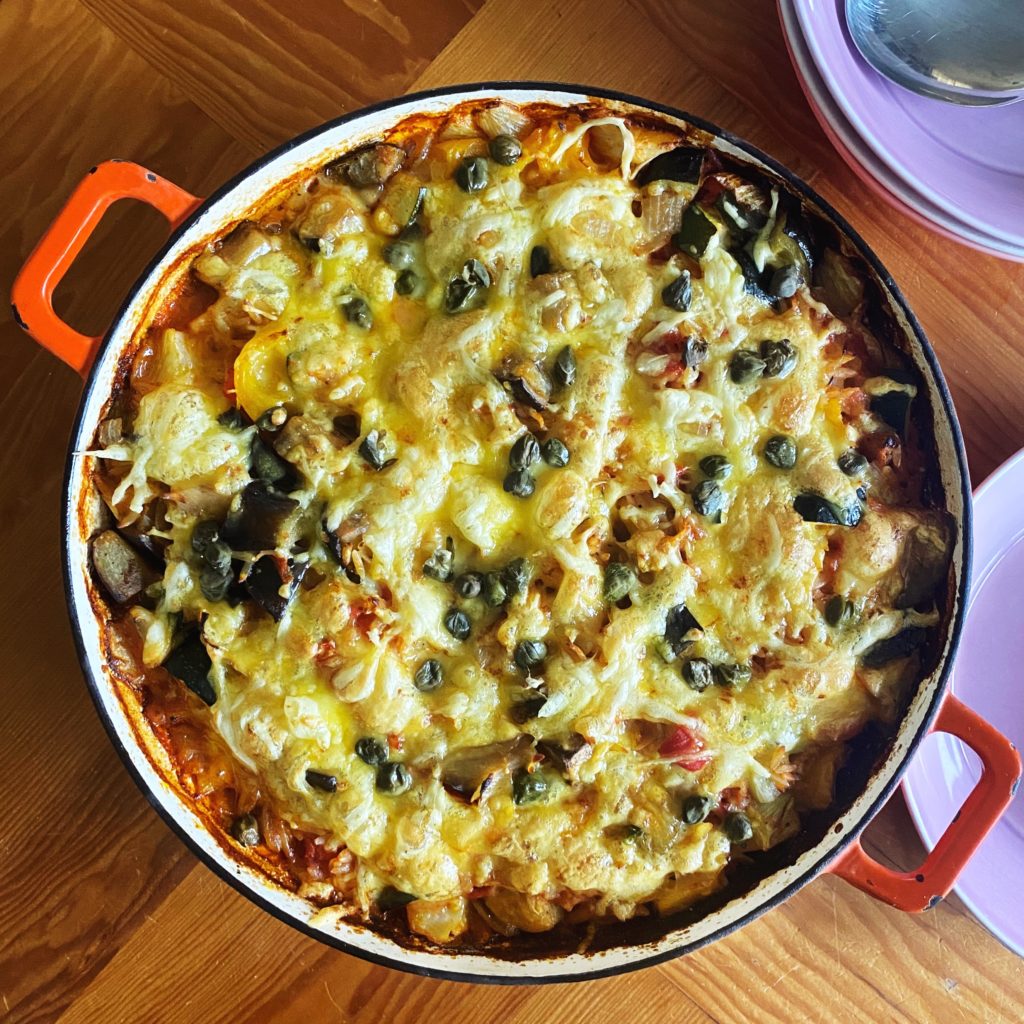
Method
- Pre-heat your oven to 200C and find a large oven and hob safe pan with a lid. If you don’t have one, you could use a roasting dish and some tin foil – roast rather than sauté the vegetables.
- Sauté the diced onion and garlic with the olive oil for 5-10 minutes or until starting to soften and colour.
- Add the chopped vegetables, season with salt and pepper and sauté for a further 10 minutes until not fully cooked through, but just starting to caramelise on the outsides.
- Pour the orzo into the pan along with the lemon and tin of chopped tomatoes. Swirl the juices out of the tin into a measuring jug until you have 500ml of water and add that to the pan too.
- At this point you may wish to add some extra ingredients like herbs, olives, capers, chopped sun-dried tomatoes, a drained tin of butterbeans etc…
- Stir well to combine the ingredients then place the lid on the dish and put it in the oven to bake for 20-30 minutes or until the pasta has absorbed all the liquid.
- Remove the lid and add a generous sprinkle of grated cheese. Return the dish to the oven with the lid off for 5 minutes or until bubbling and starting to take on some colour.
- Enjoy with a simple green salad.

